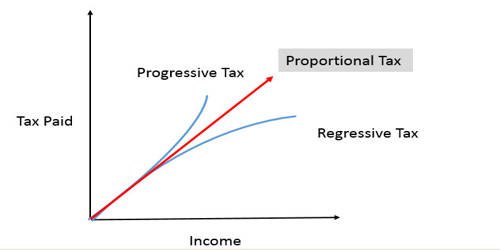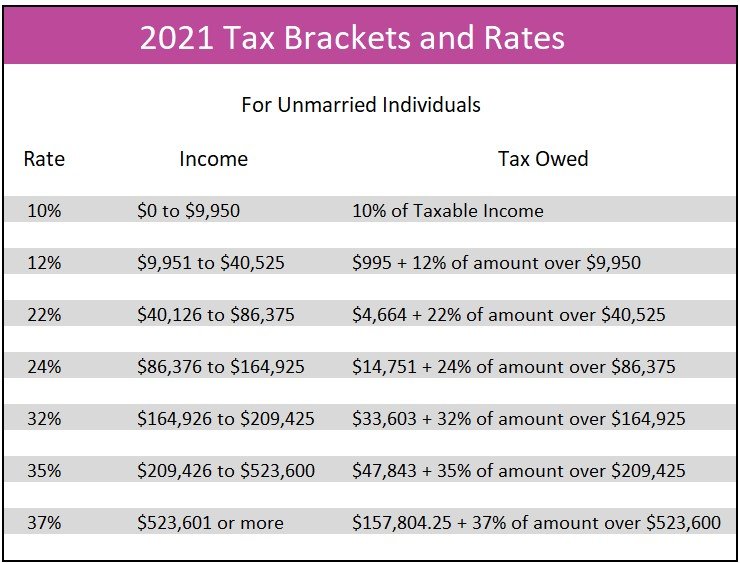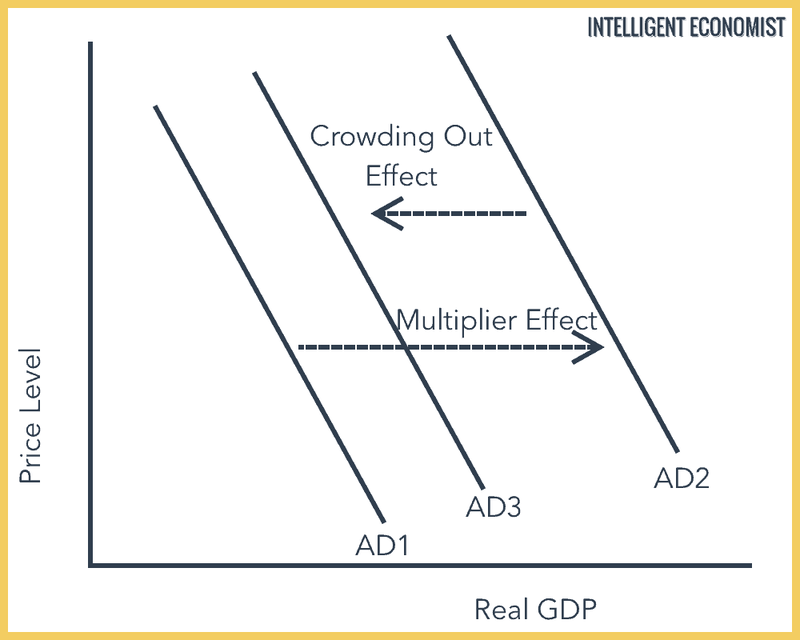Definitions
- Fiscal policy is the term for when the government intervenes in the market using taxation or government spending.
- Fiscal policy is a type of demand-side policy.
Budget
- The government creates a budget yearly that outlines their revenue and how they plan to spend money.
- Budget deficit = government spending > government revenue
- Budget surplus = government spending < government revenue
- Balanced budget = government spending = government revenue
- If a government is making a budget deficit it means they have to take on debt to pay for their expenses.
- A budget surplus is desired, as it means governments can start paying back their loans, although many governments nowadays run a budget deficit.
Government Revenue Resources
Direct and Indirect Taxation
- Direct taxes such as income taxes and indirect taxes such as sales tax, provides the government with revenue.
- Social security payments by households and firms also provide revenue.
Sale of State-Owned Goods/Services
- State-owned businesses or enterprises often gain revenue such as airlines, postal services or oil companies.
Selling State-Owned Assets
- Privatization: the process of transferring ownership of a firm to the private sector from the government.
Types of Taxes
Direct Taxes
- Taxes placed directly on individuals are typically placed on income and wealth paid directly to the government.
- Direct taxes cannot be legally avoided.
- For example: income tax, corporate taxes, wealth taxes
Indirect Taxes
- Taxes placed on spending on goods and services paid indirectly to the government.
- Indirect taxes can be avoided buy cutting on consumption of goods and services with a high VAT tax or on imported goods.
- Examples: sales tax, VAT, goods and services tax (GST), tariffs
Progressive, Regressive and Proportional Taxes
- All taxes can be placed into one of three categories.

Progressive Taxes
- Taxation where the fraction/proportion of tax paid increases as income increases.
- Progressive income taxes separate people's incomes into separate tax brackets, which are each taxed at different rates.
- Average tax rate = tax/income
- This means that the average tax rate increases with increases in income.

Regressive Taxes
- Taxation where the fraction/proportion of tax paid increases as income decreases.
- All indirect taxes are regressive.
Proportional Taxes
- A system of taxation where tax is levied at a constant rate as income rises.
Government Spending
Current Expenditures
- The daily cost of keeping the government operational.
- For example salaries of workers in the public sector, armed forces.
Capital Expenditures
- The sum of all building and infrastructure financed by the government.
- For example building schools, fire stations, roads hospitals.
Transfer Payments
- A singular type of payment from the government to individuals typically to redistribute income or aid citizens.
- For example child support, pension, unemployment payments, COVID stimulus payments.
Goals of Fiscal Policy
- Similar to Monetary Policy
- Low and stable inflation rate
- Low unemployment
- Promoting a stable environment for economic growth
- Reducing business cycle fluctuations
- External balance.
Equitable Distribution of Income
- Through a progressive direct tax system and indirectly taxing luxury goods, the government can improve the distribution of income.
Expansionary Policy
- To correct a recessionary gap, governments could use expansionary fiscal policy to increase aggregate demand.
- Expansionary fiscal policy is government spending and it increases AD.
- Expansionary policy is difficult as it often requires a budget deficit which can lead to debt.
- This can make it difficult to maintain their goal of a sustainable amount of debt.
- According to the neoclassical theory, government spending is not needed as the deflationary gap will correct itself naturally.
Contractionary Policy
- To correct an inflationary gap, governments would possibly use expansionary fiscal policy to decrease aggregate demand.
- Contractionary fiscal policy is taxation and it decreases AD.
- According to neoclassical theory, taxation is not needed as the inflationary gap will correct itself.
Strengths of Fiscal Policy
- Government intervention is required for Keynesian view.
- The neoclassical view however suggests it is not necessary.
Specified Sector
- Able to target specific sectors of an economy.
Automatic
- Effective in a recession (automatic stabilizers).
Tangible Impact
- Direct impact of AD.
Limitations of Fiscal Policy
Political Pressure
- Differing political parties have different beliefs on what is best for the economy.
- These differences frequently lead to longer response times.
Time Lags
- The government takes time to notice a problem, develop a policy, and then implement that policy.
- These policies take time to be effective.
Sustainable Debt
- Governments must spend money to stimulate the economy if needed.
- These expenditures compile and may turn into large amounts of debt.
Crowding Out
- When government spending on the public sector drives down the private sector spending (consumption and investment).
Targeted
- It is hard to make it achieve specific targets.
- It is difficult to predict the precise outcome of any fiscal policy.
Debt
- Debt is the total amount of money that a government owes to its creditors, both domestic and foreign.
- For example owners of bonds and central banks from which loans are taken.
- Accumulation of budget deficit, leads to debt.
- Debt is often expressed as a percentage of GDP.
Negative Effects of Debt
Crowding out
- Interest payments are a part of government expenditure.
- More debt leads to a higher percentage of government expenditure that needs to go to interest payments.
Taxation
- Requires higher levels of taxes to fund expenditure.
Response to Emergencies
- High debt may decrease the ability of governments to respond to emergencies.
Keynesian Multiplier (HL)
- When the government spends money, there is a far larger affect on aggregate demand than just the value of the injection itself.
- This is called the Keynesian multiplier.
- For example, if a government pays a firm $100 million to build a new highway, then that firm buys raw materials pays households with wages who then spend those wages, leading to an overall increase in AD greater than $100 million.
Circular Flow and Government Spending
Marginal Propensity to Save (MPS)
- MPS is the proportion of income that households choose to save.
Marginal Rate of Taxation (MRT)
- MRT is the proportion of income that households pay in taxes.
Marginal Propensity to Consume (MPC)
- MPC is the proportion of income that households choose to spend and that affects domestic economy.
Marginal Propensity to Import (MPM)
- MPI is the proportion of income that households choose to spend on imported goods.
Examples
Building a New School Scenario
- The government contracts out this building and hires a construction company.
- This construction company must then purchase resources to build this school.
- Additionally, they hire more employees for the job.
- Households now receive more income.
- Households will either spend or save that income.
Highway Scenario
- Assume Households MPC = 30% or 0.3
- Households spend 30% of the additional income they receive 0.3*$100 million = $30 million
- Firms must now adjust their inventory due to the increase in spending.
- This requires more factors of production to be purchased.
- Households now have additional income and are now spending an additional 0.3*$30 million = $9 million.
- The chain reaction would continue until the $100 million initial government spending would result in a $142 million outcome.
- The chain continues until the change is negligibly small.
Calculating the Keynesian Multiplier
- As households will spend the money they recieve multiplied by the MPC every time they receive money, this will lead to a loop that is modelled as a geometric series.
- The sum of an infinite geometric series where the multiplier is less than 1 is written as 1/(1-multiplier).
- Thus the Keynesian multiplier is written as:
- Multiplier = 1/(1-MPC)
- Where MPC is written as a decimal number.
- There is an alternative way to measure the multiplier.
- It is defined as:
- Multiplier = 1/(MPS + MPT + MPM)
- This works because MPS, MPT and MPM are all activities that do not make the economy grow.
- Therefore:
- the proportion of income that does not make the economy grow =1-the proportion of income that does make the economy grow.
Calculating the Change in GDP
- Change in GDP = Keynesian multiplier*the change in expenditure
Crowding Out
- Crowding out is when government spending on the public sector drives down private sector spending.
This means an increase in government spending can reduce consumption and investment.
Example
- If the government decides to build a new school they must increase their spending.
The government must demand more money resulting in an increase to the overall interest rate. - As interest rates rise, firms will find it too expensive to invest in new projects and spending.
- This results in a decrease in consumption and investment.
- Fiscal policy should lead to a readjustment of AD to equilibrium (AD -> AD1).
- However, due to crowding out, investment and consumption fall, resulting in a decrease to AD2.

Automatic Stabilizers
- Fiscal policies has two underlying policies which are automatic stabilizers.
- These are progressive income taxes (taxation) and unemployment benefits (government spending).
- These reduce business cycle fluctuations without an government intervention and occur automatically.
- Progressive income taxes function as an automatic stabilizer, as with increases in income they will tax progressively more, discouraging increasing consumption further.
- Progressive taxes also tax progressively less when people are making less income, meaning it encourages consumption during a recession where wages are reduced.
- Unemployment benefits allow people who have no jobs to still have some income, meaning they can continue to consume.
- With these benefits, it is hoped that people will continue to consume even if they lose their job during a recession.
- Unemployment benefits only affect those who don't have jobs, meaning it doesn't boost consumption during an expansion.
Economic Recession
- Unemployment rises and the government spends more on unemployment benefits.
- For those that keep their jobs, wages fall with Average Price Level.
- Lower wages push individuals into a lower tax bracket, allowing them to save money.
- Decrease government tax revenue.
- An increase in government spending and a decrease in taxes will encourage consumption and increase aggregate demand so that the economy returns to full employment.
Economic Expansion
- Unemployment falls and the government spends less on unemployment benefits.
- As individuals are hired and receive an increase in wages, they are pushed into a higher tax bracket meaning that they pay more income tax.
- Increase government tax revenue.
- A decrease in government spending and an increase in taxes will slow down the economy to combat the inflation and return to full employment.